Indexed In
- Open J Gate
- Genamics JournalSeek
- Academic Keys
- JournalTOCs
- ResearchBible
- China National Knowledge Infrastructure (CNKI)
- Scimago
- Ulrich's Periodicals Directory
- Electronic Journals Library
- RefSeek
- Hamdard University
- EBSCO A-Z
- OCLC- WorldCat
- SWB online catalog
- Virtual Library of Biology (vifabio)
- Publons
- MIAR
- Scientific Indexing Services (SIS)
- Euro Pub
- Google Scholar
Useful Links
Share This Page
Journal Flyer

Open Access Journals
- Agri and Aquaculture
- Biochemistry
- Bioinformatics & Systems Biology
- Business & Management
- Chemistry
- Clinical Sciences
- Engineering
- Food & Nutrition
- General Science
- Genetics & Molecular Biology
- Immunology & Microbiology
- Medical Sciences
- Neuroscience & Psychology
- Nursing & Health Care
- Pharmaceutical Sciences
Research - (2021) Volume 12, Issue 7
Nanobots as an Alternative for Treatment to Vaccines for COVID-19
Dalvinder Singh Grewal1* and Ramanjit Kaur22BMS College of Engineering, India
Received: 02-Jul-2021 Published: 21-Jul-2021, DOI: 10.35248/2157-7439.21.12.572
Abstract
The outbreak of Coronavirus disease 2019 (COVID-19), caused by severe acute respiratory syndrome (SARS) coronavirus 2 (SARS-CoV-2), has thus far killed over 3,000 people and infected over 80,000 in China and elsewhere in the world, resulting in catastrophe for humans. Similar to its homologous virus, SARS-CoV, which caused SARS in thousands of people in 2003, SARS-CoV-2 might also be transmitted from the bats and causes similar symptoms through a similar mechanism. However, COVID-19 has lower severity and mortality than SARS but is much more transmissive and affects more elderly individuals than youth and more men than women. In response to the rapidly increasing number of publications on the emerging disease, this article attempts to provide a timely and comprehensive review of the swiftly developing research subject. We will cover the basics about the epidemiology, etiology, virology, diagnosis, treatment, prognosis, and prevention of the disease. Although many questions still require answers, we hope that this review helps in the understanding and eradication of the threatening disease.
Keywords
COVID-19; Vaccination; Nanotechnology; Nanorobots
Introduction
Globally, as of 5:31 pm CEST, 18 June 2021, there have been 177,108,695 confirmed cases of COVID-19, including 3,840,223 deaths, reported to WHO. As of 20 June 2021, a total of 2,412,226,768 vaccine doses have been administered [1]. Do these vaccinations ensure that these will kill the virus from their roots and there will be no further spread of pandemic? There is no positive answer available at present since now the talk of the third wave is on and planning is being made on how to contain it. What is essential; is killing the virus from its very roots. It needs a totally different mechanism; the vaccine is only a temporary arrangement. Can nano-bots be employed for killing the virus from the roots? The purpose of this paper is to study the effectiveness of vaccines to kill the virus and stopping its spread totally. If it is not effective; then consider medical nanobots as the alternative; their development, manufacture, inoculation into a body, and the process of permanent elimination of the virus. Here first COVID 19 is defined, next the effectiveness of vaccines for COVID 19 is studied, and then the efficacy of nanotechnology with specific reference to medical nano-robots and their effectiveness visà- vis vaccines is analyzed.
COVID-19
COVID-19 has four abbreviations combined in one i.e., ‘CO’ for corona; ‘VI’ for virus; ’D’ for disease and 19 for 2019; meaning disease found in 2019. COVID-19 stands for a new strain of coronavirus. Initially, UNO numbered it as novel coronavirus by the year of origin 2019 '2019-nCoV.' (WHO) (2) COVID-19 has strange ways of affecting different people varying from low to serious infections. Mild to moderate illness like fever, dry cough, and tiredness is developed in most of the people and they do not require hospitalisation to recover. Less common symptoms are aches and pains, sore throat, diarrhoea, conjunctivitis, headache, loss of taste or smell, a rash on skin, or discolouration of fingers or toes (WHO) (Figure 1).
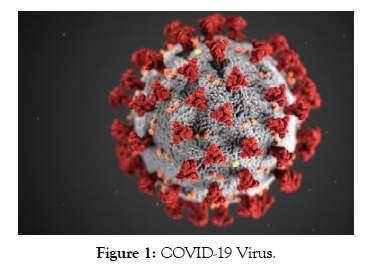
Figure 1: COVID-19 Virus.
COVID-19 is thus a virus which is a replicating agent replicating only the inside living cells of organisms affecting all types of life forms [3, 4] More than 9,000 virus species have been described with detail [5] of the millions of types of viruses in the environment [6]. Viruses are found in almost every life system on Earth as biological entities [7,8].
A host cell is forced to rapidly produce thousands of copies of the original virus when infected with virus. When in the process of infecting a cell or when the viruses or virions, exist in the form of independent particles, they consist of: (i) RNA that encode the structure of the proteins by which the virus acts for long molecules of DNA. This is when they are not inside an infected cell/genetic material (ii) they form a protein coat, which surrounds and protects the genetic material. In some cases (iii) they may be outside as envelop of lipids in either of helical or icosahedral shape or of more complex structures. Virions, the species of virus, may be one-hundredth the size of most bacteria, too small to be seen with an optical microscope.
The viruses are said to have originated from pieces of DNA or plasmids capable of moving between cells or originated from bacteria. Like sexual reproduction these viruses increase genetic diversity through gene transfer [9]. Some biologists consider these to be a life form, because they carry genetic material, reproduce, and evolve through natural selection. But the key characteristics, like cell structure necessary for life, do not exist in them. They have some but not all such qualities of viruses. These can be stated as the "organisms at the edge of life", [10] or self-replicators. [11] COVID 19 is a type of coronavirus.
Coronavirus
Coronavirus belongs to a group of RNA viruses. It causes a variety of respiratory, gastrointestinal, and neurological diseases in humans and other animals through infection with or through the disease caused by a coronavirus and is stated to be "1: Belonging to a family (Coronaviridae) of giant single-stranded RNA viruses having a lipid envelope studded with club-shaped spike proteins, these infect birds and lots of mammals including humans. The affecting elements of MERS, SARS, and COVID-19 are also included. Variety of illnesses in animals, and one-third of common colds and sometimes respiratory infections in premature infants are caused by Coronaviruses. [12] In 2003 a previously unknown coronavirus caused an outbreak of SARS in human beings and in 2019 COVID-19 has caused a pandemic.
COVID-19 (SARS-CoV-2) spread around the world and shown R0 values from 2.2 to 2.68 is the most recent human coronavirus. COVID19 however has not been as fatal other human coronaviruses (such as severe acute respiratory syndrome coronavirus (SARS-CoV) and Middle East respiratory syndrome coronavirus (MERS-CoV)) [13].
Effect of Vaccination
Vaccination was resorted to control COVID 19 at Global level but there have been adverse effects of these vaccinations and there is no conformity that these vaccines will stop further development of virus. A little over 26,000 cases of Adverse Events Following Immunisation (AEFI) and 488 deaths linked to post-vaccination complications have been reported in India between January 16 and June 7, according to government data accessed by CNN-News18 [14].
Outbreaks of such pandemics tested the limits of healthcare systems. No officially approved 100 per cent effective drugs or vaccination for COVID-19 are available yet, though the number of infected patients is continuously increasing. Symptomatic relief and respiratory support is mainly used in the current treatments of seriously ill patients [15,16]. 100 per cent effective, targeted and safe drugs and vaccines to control this virus are still underway. Because of viral mutations and the resulting emergence of new viral strains, the effectiveness of the new vaccines, safe drugs and conventional treatments of viral infections progressively fades away take time [17]. Because of the long process necessary to prove their efficacy and safety, the development of new drugs is lagging behind the need for them [18]. Multidisciplinary research efforts are needed towards the development of alternative antiviral therapies, targeting different phases in the viral replication cycle to overcome the limitations and to improve antiviral treatments [19, 20]. The use of conventional therapies and diagnostic tools has posed serious questions about management.
Nanotechnology for containing the Virus
Under these conditions, nanotechnology offers new opportunities for the development of novel strategies in terms of prevention, diagnosis, and treatment of COVID-19 and other viral infections. Nanotechnology has already drawn attention in investigating the potential use in the prevention and/or treatment of viral infections [21-23] and is now used as disinfectants, personal protective equipment, diagnostic systems, and nano-carrier system for treatments and vaccine development and offers a big scope as nanobots for COVID-19 virus management. The design and application of several materials and devices with at least one dimension less than 100 nanometres falls under the definition of Nanotechnology. The application of nanotechnology in the medical field is known as nanomedicine.
This includes the use of nano-materials for diagnosis, treatment, control, and prevention of diseases [24,25]. Nanoparticles have been extensively used and studied over the recent decades, due to their unique properties, such as small size, improved solubility, surface adaptability, and multi-functionality, resulting in the development of better and safer drugs, tissue-targeted treatments, personalized nanomedicines, and early diagnosis and prevention of diseases [26,27].
Various approaches of diagnosis, treatment and prevention of COVID-19 through Nanotechnology could avoid viral contamination and spray by: (a) personal protective equipment (PPE) designed to be infection-safe to enhance the safety of healthcare workers and development of effective antiviral disinfectants and surface coatings. These are able to inactivate the virus and prevent its spread; (b) designing specifically highly sensitive nano-based sensors and to quickly identify the infection or immunological response; (c) development of new drugs, with enhanced activity, decreased toxicity and sustained release, as well as tissue-target, for example, to the lungs; and (d) development of a nano-based vaccination to boost humeral and cellular immune responses and (e) Use of nanorobotics for eliminating of coronavirus.
For the virus infection with high specificity and sensitivity, nanobased biosensors might be utilized in diagnostics [28,29]. New generation of vaccines with improved antigen stability, target delivery and controlled-release are different types of nanomaterials [30,31]. The Study of the mechanism by which viruses infect host cells can be enabled by nanoparticle-based markers [32-34]. The Schematic representation of SARS-CoV-2 infection and the tools of nanotechnologies which can be used to prevent and control COVID-19 is given in the Figure 2 below.
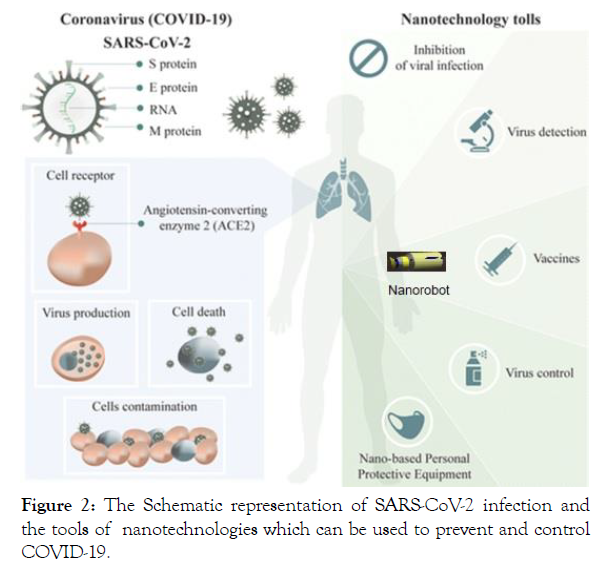
Figure 2:The Schematic representation of SARS-CoV-2 infection and
the tools of nanotechnologies which can be used to prevent and control
COVID-19.
Nanorobots
Nano-robotics is an emerging technology field creating machines or robots whose components are at the scale of a nanometer (10−9 meters) [35-37]. More specifically, nano-robotics refers to the nanotechnology engineering discipline of designing and building nano-robots, with devices ranging in size from 0.1 to 10 micrometres and constructed of nanoscale or molecular components [38,39]. The terms nano-bot, nanoid, nanite, nano-machine, or nano-mite have also been used to describe such devices currently under research and development [40,41]. With an autonomic pre-programmed structure of the atomic level, a nanorobot is a machine belonging to the nanorobotics engineering discipline capable of manipulating precisely and arranging atoms like Lego pieces and building any structure from basic atomic elements such as C, N, H, O, P, Fe, Ni, and so on. Billions of nanobots with biological names like “ribosome,” are operating inside our trillions of cells keeping us alive which are actually machines programmed with a function like “read DNA sequence and create a specific protein.”
To counter COVID19 and its variants we need such nanobots. Functions needed for nanobots are actuation, sensing, manipulation, propulsion, signalling, and information processing at the nanoscale. DNA strands in Test Tubes can be used for computer programming of nanobots to activate these by logical AND gates for starting the function of navigation. After its entry in the host strand, the payload will open a socket for remote control, like conventional hacking. Replication starts from the payload to replace worn-out units.
Nanorobots are already on the research thresh hold in the following fields 1. Treatment of cancer replacing chemotherapy; delivery of therapeutic and imaging agents for cancer 2. Dental treatment including surgery 3. DNA Origam 4. DNA Sensors as Biosensors 5. Eye surgery 6. Nanogene therapy 7. Health Monitoring 8. Bye pass surgery 9. Treatment of Gout 10. Tissue reconstruction therapy 11. Other Delicate surgeries 12. Information delivery to the brain and many other medical applications.
Functions needed to be performed by nanobot include sensing, manipulation, propulsion, signalling, and information processing at the nanoscale.
Structural Material for Nanorobot
According to Scientists carbon atoms in a diamondoid structure because of their inert properties and strength is ideally suited for the exterior of a nano-robot. Nano-robots are allowed to go about their business unimpeded on super-smooth surfaces since these will lessen the likelihood of triggering the body's immune system. Source for propulsion might be glucose or natural body sugars and oxygen and depending on its task, the nano-robot will have other biochemical or molecular parts [42] Organic materials such as proteins and polynucleotides, or inorganic materials such as metals or diamond can be used to produce nanobots [43,44].
Diamond stands out for its high strength and high performance. Metals could have double purpose, for example to have an antibacterial effect, silver can be the base of a nanobot [45,46,47]. In some cases, they can act as a virus causing irreversible cell damage.5 For defining the solubility and interactions with other macromolecules or cell surfaces, the surface properties of the nanobots are a key factor. Size or shape of a nanobot will affect directly their motion, permeabilization Tn and reactivity.[48] Motion, permeabilization and reactivity of nanobots is directly affected by their size and shape [48]. To obviate this models could be of different extracellular nanostructures. For achieving efficient propulsion in biological media Ga et al [49] used spiral water conduction vessels of plants coated with thin Ti and Ni layers, achieving efficient propulsion in biological media [49] The propulsion mechanism can be biocompatible or not depends on the fuel used [50,51].
Nanobots in medicines aim to pinpoint the target and act; it may be the delivery of medicines or eliminating the affected cells [52]. They may be used to detect and mobilize to a determined part of the body where the problem is located, send feedback, and act. This requires sensors propulsion equipment, power supply, nanocomputers, manipulators, and storage compartments [53].
Sensors
Any sensor that uses a nanoscale phenomenon for its operation is classified as a nanosensor [51]. Nanosensors may be mechanical, thermal, optical, magnetic, chemical, or biological as per the need [51]. Since it is the biological aspect of medicine biological sensors are the most viable proposition for coronavirus elimination [54]. For example, nano-cantilevers as a Nano Electro-Mechanical System (NEMS) utilize biological material attached to a coated cantilever, causing fundamental changes in mass or its surface tension [55]. Nanobots in medicines aim to pinpoint the target and act; it may be the delivery of medicines or eliminating the affected cells [52]. They may be used to detect and mobilize to a determined part of the body where the problem is located, send feedback, and act. This requires (a) sensors (b) propulsion equipment, (c) power supply, (d) nanocomputers, (e) manipulators, and (f) storage compartments [53]. Since it is the biological aspect of medicine biological sensors are the most viable proposition [53]. For example, nano-cantilevers as a Nano Electro-Mechanical System (NEMS) utilize biological material attached to a coated cantilever, causing fundamental changes in mass or its surface tension [55].
Nano-Cantilevers
Nano Cantilevers are essential and important parts in nanobots. A basic micromechanical component in many MEMSs is the cantilever, represented which is frequently integrated with electronic and/or optoelectronic components for various purposes. Very thin GaAs cantilevers have been produced via micromachining technologies through semiconductor cantilevers are mostly fabricated from Si. Metallic cantilevers are used mainly as absorbers of chemical or biological substances. Nano-cantilevers have widths and thicknesses of a few nanometres and lengths of a few microns. On the organic part, biosensors utilize biological reactions for detecting target analytes, [54] and considering the need to accomplish the target treatments. These types of sensors are the appropriate devices to meet the goals of nanobots in medicine. Example of this type of sensors is the utilization of nano-cantilevers as a Nano Electro Mechanical System (NEMS). To cause fundamental changes in mass or its surface tension this system utilizes biological material attached to a coated cantilever [55] (Figure 3).
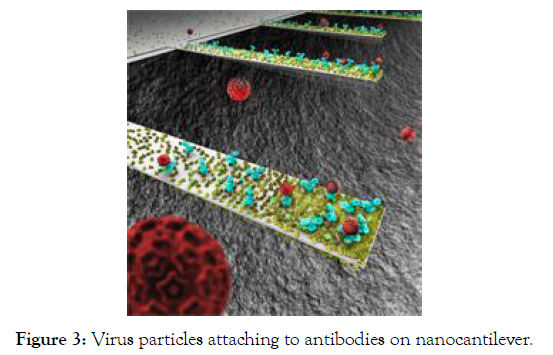
Figure 3: Virus particles attaching to antibodies on nanocantilever
Cantilevers can operate either in dynamic or static mode. In dynamic mode, the cantilevers respond to the biochemical interactions of the surface through a change in the resonance frequency caused by the mass or rigidity of the target molecule. Thus the frequency is used to analyze the topography of the surface, and detect the different molecular bonds. Static mode relies on the absorption of determined analytes from a static cantilever causing differential surface stress (bending. Consequently, it causes deflection regarding the reference point [56, 57]. The relationship between the sensor and the analyte is defined by this differential surface stress [57]. To detect the presence of target biomolecules in a small volume of samples, these cantilever attributes can be utilized. In medicine, this implies an early detection of diseases, such as cancer [58].
Propulsion Equipment
Nanoscale devices that have their own propulsion are called nanomotors. They obtain the energy by chemical reactions of the medium, electricity, magnetic, or acoustic fields [59,60]. Viscosity and Brownian motion may cause problems; Brownian motion corresponds to the random motion of particles caused by the thermal collisions between the molecules of the solvent and the colloidal particles [61]. Nanobots need sufficient energy to overcome the properties of a fluid in nanoscale and achieve movement which may be a problem [62].
The movement of the nanobots can be facilitated by an external or internal approach. In the external approach for propulsion, after some predecessor studies in the eighties using magnets and super conducing-magnets, MRI devices became the leading option [52] Advantages of this system include controlling the speed and direction of nano-bots from an external computer thereby decreasing risk considerably [63]. Real-time feedback of the behavior of the nano-bots can be known through the MRI providing all the power depending on the external machine. Developing complicated and power-consuming nano-motors can be avoided. In the internal approach, the best models are the bio-motors that exist in nature already. Cell division, protein synthesis, and DNA transcription are some of the fields of natural energy which can be used to develop chemical energy for movement [62].
Nanobots have to act like a nanodoctor inside the body. Research on cancer, the leading cause of death is already on [63, 64] where the nanobot will move independently around the body and detect a cancer cell Figure 1. When inside or interacting with the cancer cells they will release the drug at the cancer cells reducing the side effects of anti-cancer drugs on other parts of the body [65]. Some nanoscale robots can destroy cancer cells through thermal necrosis when a non-invasive external source of heating; or stimulus will be applied In addition to the cancer drug attack. Super magnetic beads can penetrate and destroy cancerous tissues with a magnetic field [66].
Entering of nanobots into human Body
Nanomedicine's nanorobots are of nanosize hence so small that they can easily enter the human body and roam around. Nanobots will be injected into the circulatory system by intravenous infusion techniques for atherosclerosis and other cardiovascular diseases such as ischemic or arrhythmias, and for acting against fatty deposits. Nano-bots are planned to be used for diagnosis and treatment of demyelination, as nano-robots can reach the layer of myelin in the nerves. Detection of Alzheimer's disease by specific nano-bots based on the amyloid protein β deposits is also in progress [67].
Some Essential Parts needed for a Nanorobot
1. Sensors: Pressure, Chemical and temperature
2. Propulsion system
3. Power source
4. Magnetic plates
5. Data storage
6. Wireless system for communication (Figure 4-10)
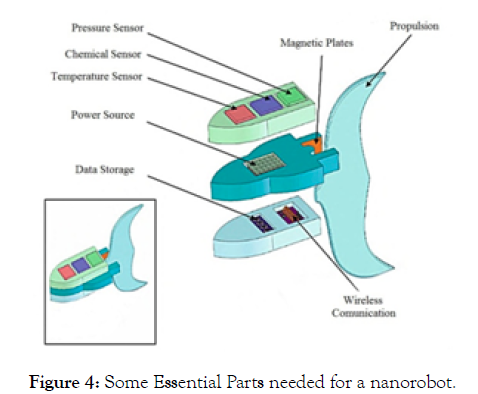
Figure 4: Some Essential Parts needed for a nanorobot.
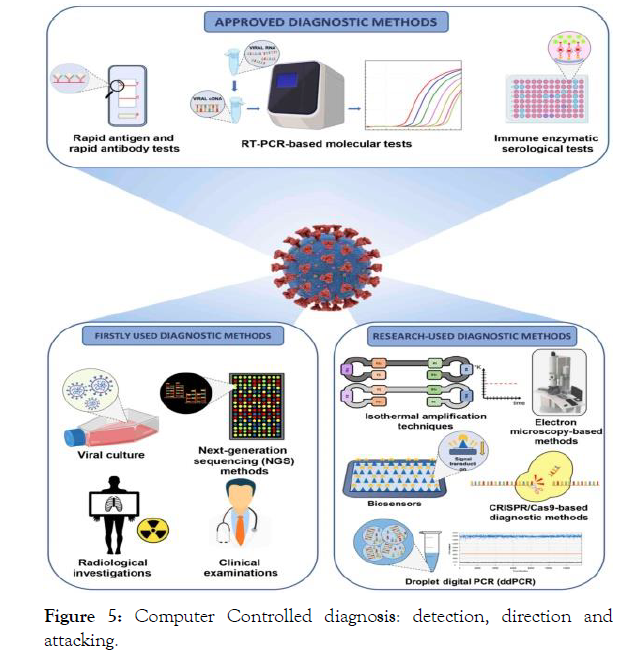
Figure 5:Computer Controlled diagnosis: detection, direction and
attacking.
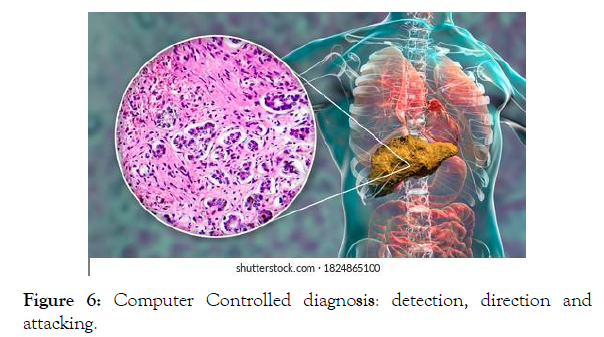
Figure 6:Computer Controlled diagnosis: detection, direction and
attacking.
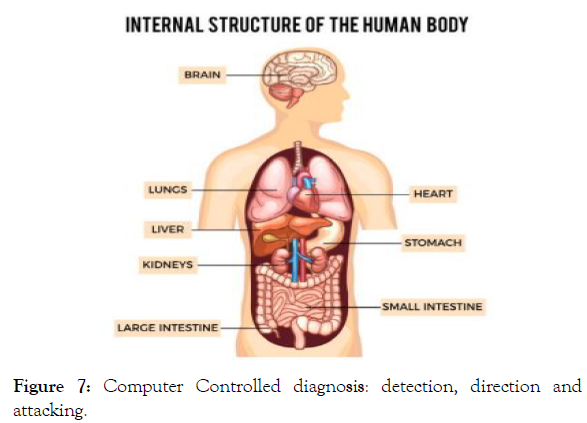
Figure 7:Computer Controlled diagnosis: detection, direction and
attacking.

Figure 8:Computer Controlled diagnosis: detection, direction and
attacking.
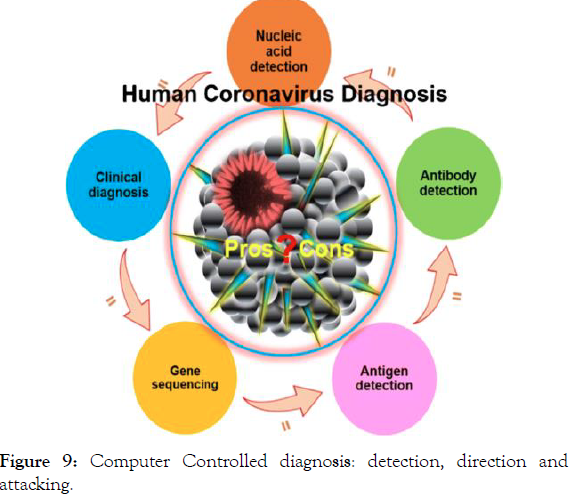
Figure 9:Computer Controlled diagnosis: detection, direction and
attacking.
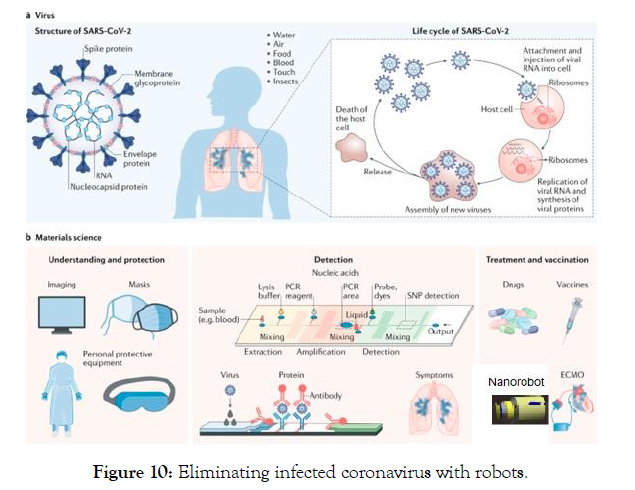
Figure 10: Eliminating infected coronavirus with robots.
Actions needed for eliminating corona virus will be as under:
1. Identification of viruses
2. Detection/ Precise Location of the Coronavirus
3. Confirmation of amount of infection and location through Collection, Collation and
Interpretation of data to nanorobots
4. Order entry of nano-robots into body
5. Computer controlled Nanorobots capable of entering into body without any harm.
6. Dissemination of data to nanorobot
7. Preparation of Nano robot to attack
8. Energise, attack and destroy virus
There could be two approaches (a) External (b) Internal
In External Approach
External approach will be computer controlled where Electronic Microscopes (ESM) and volley of nano-robots will be under direct control of the control and provide further direction for elimination and excretion. Steps 1, 2 and 3 will be taken by computers with the help of ESM. Computer will give direction for action 4 under the supervision on ESM. In step 5 after feeding due date robots stream is entered into body and the nano-robots are directed to the targets. The elimination by the target may be through flames on to the coronavirus duly identified with the information gathered through the ESM, fed into computer, analysed and then fed into remote computer inside the body. The computer from outside then energise the nanorobot and sent into destroy the selected target.
In Internal approach the nano-robot is fitted in with a nano-chip, transmitter and receiver, analyser and energiser. Each nano-robot is capable of working independently, identifying, preparing and targeting.
The target destruction/elimination
The target is destroyed through flames as shown in figure 11 or through tongs as shown in figure 12.
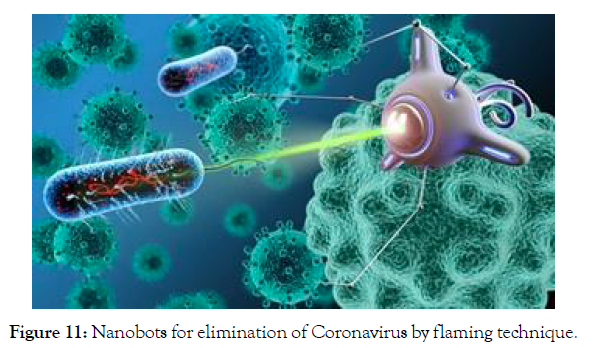
Figure 11: Nanobots for elimination of Coronavirus by flaming technique.
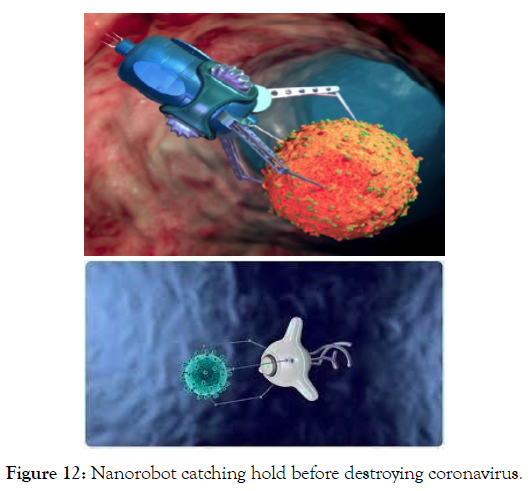
Figure 12: Nanorobot catching hold before destroying coronavirus.
Due to more bioavailability, targeted therapy, fewer surgeon mistakes; remote areas reach in human anatomy, large interfacial area for mass transfer, non-invasive technique, computer control of delivery, better accuracy, fewer side effects and greater speed of drug action nano-robots have a number of advantages as has been seen in drug delivery. However here we are concerned with nano-robots of elimination of coronavirus where previous research should be the basis.
Advantages of Nanobots over Vaccination
1. Nano-robots aim at the elimination of roots while vaccines aim only at increasing immunity.
2. Elimination of coronavirus does not allow its reproduction or multiplication and the disease is eliminated altogether. This is not the case about vaccines where re-emergence or reactivation of coronavirus has been resulting in death even after vaccines.
3. In case of some healing nano-robot is capable if drug delivery systems with increased bioavailability to the exact place of infection. Nano-robots have the ability to deliver payloads such as drugs, or healthy cells to the specific site. Vaccines are meant for the body treatment and not for individual cells.
4. Targeted therapy such as only malignant cells can be treated by nano-robots which is not the case of vaccines
5. Fewer mistakes on account of computer control and automation than the vaccination
6. Nano-robots can reach remote areas in human anatomy which may not be operatable at the surgeon’s operating table.
7. As drug molecules are carried by nano-robots and released where needed the advantages of large interfacial area during mass transfer can be realized;
8. It is a non-invasive technique;
9. Computer controlled operations with robots fine tune the amount, frequency, time of action.
10. Better accuracy;
11. Minimizes undesired side effects.
12. Incisions harm tissue layers, which take quite a long time to heal. Minimal or no tissue trauma.
13. For certain vaccines painful anesthesia is used to limit the pain to a great extent, yet it is only for a short time.
14. Considerably less recovery time.
15. Less post-treatment care required.
16. Continuous monitoring and diagnosis from the inside.
17. Rapid response to a sudden change.
18. Nanorobots can store and process previous data, identify patterns, and hence, help to predict the onset of an ailment.
19. Nanorobots can guide externally or as per program, targeting specific locations.
Present Research in Medical Nanobots
Rice University has demonstrated a single-molecule car which is developed by a chemical process and includes buckyballs for wheels [68,69] Scientists and researchers are workings on a more robust, reliable, and bio-compatible approach for nano-robots. Instead of curing of the outside, they plan to defend the body from the inside. That is where medical nan-orobots come in. The major advantages of this technology provide are
They can navigate through natural biological pathways; hence it can be customized (and often more durable) to body cells manufactured externally [70].
The disadvantages of Nanorobotics are however when different nanorobots are inserted to cure different diseases, the clusters may be formed inside the body. The research and installation cost is quite high [70].
Actuation and Control Of Nanaorobots
Controlling the environmental temperature and positioning a scanning tunnelling microscope tip actuation of nanorobots is done. Very large numbers of nanorobots are required to work together to perform microscopic and macroscopic tasks. These nanorobot swarms are found in many science fiction stories, such as the Borg nanoprobes in Star Trek [71].
Biochip
To enable the required manufacturing technology towards nanorobots for common medical applications, like elimination or coronavirus, surgical instrumentation, diagnosis and drug delivery [72, 73, 71], the combined use of nano-electronics, photography, and new biomaterials can be considered as the best possible way. For teleoperation and advanced capabilities for medical instrumentation, practical nano-robots should be integrated as nano-electronics devices [74]. Presently, the focus of research is on nano-motors for the propulsion component. In the field of nanomedicine, chemically, magnetic and acoustic-driven nano-motors have been produced and applied. Major research is needed however in technologies based on fuel-free and biocompatible approaches and in the creation of a functional nano-bot that should be useful for the human being. For this, surface modifications, structures, components, and body responses have to be well understood. As nanotechnology, biotechnology and computing science are deep in research there is a real possibility that nano-bot will be available soon in the field of medicine. The design and experimentation are in progress, however. Now the researchers must show that their molecular robots work in a living animal; the next step will be experiments in mice [75].
Nanocantilever Based Biological Sensors
Researchers at Purdue University have made a discovery about the behavior of tiny structures called nano-cantilevers that could be crucial in designing a new class of ultra-small sensors for detecting viruses, bacteria, and other pathogens. The nano-cantilevers, which resemble tiny diving boards made of silicon, could be used in future detectors because they vibrate at different frequencies when contaminants stick to them, revealing the presence of dangerous substances. Because of the nano-cantilever's minute size, it is more sensitive than larger devices, promising the development of advanced sensors that detect minute quantities of a contaminant to provide an early warning that a dangerous pathogen is present [76].
The nanorobot prototype for drug Delivery
Douglas and his team created a prototype of a smart nanorobot. To create a new nanorobot, cadnano was used as DNA computing software. It was to help to design a folded, 3-D hexagonal DNA nanorobot that was able to carry molecular ‘cargo’ within its structure. The folded DNA device had two DNA-aptamer ‘locks’ – known as staples – that close around the cargo material to keep it secure until the destination cells are reached. The nanorobot’s molecular locks are programmed to respond to specific key combinations of proteins on the cell surface, so the cargo can only be delivered when the intended cell’s receptors had the right combination. “We can finally integrate sensing and logical computing functions via complex, yet predictable, nanostructures – some of the first hybrids of structural DNA, antibodies, aptamers, and metal atomic clusters – aimed at useful, very specific targeting of human cancers and T-cells,” said Douglas [77]
A nano ‘smart box’
By combining advanced structural design with the DNA origami method, two lock method was designed. “The nanorobot being a ‘smart box’ for other molecules – a box that opens if and only if it detects keys for locks placed on its lid,” claimed Douglas. “It potentially drastically reduces side effects when keyed to proteins on the surface of cancer cells, and becomes an effective method of delivering drugs to cancer cells (and only cancer cells)” [77]. Douglas and his colleagues put two different locks on the lid of the box, making it open only when both keys are encountered [78]. The combination of keys will identify many kinds of cells and recognize and deliver drugs to certain kinds of cells,” he said. ‘Programmable drug delivery is provided by no other approach” [79] (Figure 13).
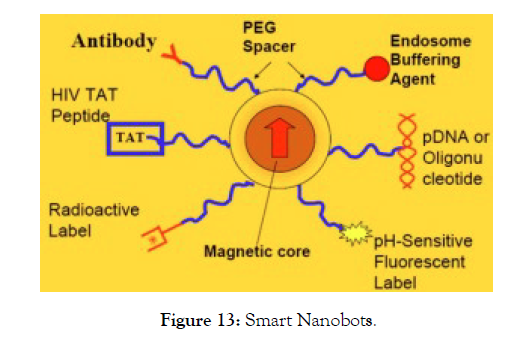
Figure 13: Smart Nanobots.
The most detailed theoretical discussion of nanorobotics, including specific design issues such as sensing, power communication, navigation, manipulation, locomotion, and on board computation, has been presented in the medical context of nano-medicine by Robert Freitas. Some of these discussions remain at the level of unbuildable generality and do not approach the level of detailed engineering [80].
Conclusion
Nanorobots are the future and fit enough to replace vaccination for the elimination of coronavirus from bodies. Many aspects of Nanorobots have already been studied and are also on research tables. Providing as an alternative to a vaccine for COVID 19 is however the new proposition that needs to be explored and put into practice. Since the base is there, parts are already on the thresh hold, it will not take much time to produce either flaming robots burning the virus as shown in figure 11 or smart nanobots capable of destroying the virus and also the infected cells as shown in figure 12. Vaccines have not yet provided a fool proof solution, it is the nanorobots that bring in new hope and must be immediately researched.
REFERENCES
- WHO Coronavirus (COVID-19) Dashboard report. 16 July 2021.
- Wu KJ. There are more viruses than stars in the universe. Why do only some infect us? – More than a quadrillion x quadrillion individual viruses exist on Earth, but most are not poised to hop into humans. Can we find the ones that are? National Geographic Society. 2020; 5(18).
- Koonin EV Senkevich TG, Dolja VV. "The ancient Virus World and evolution of cells". Biol. 2006; 1(1): 29.
- Zimmer C. The Secret Life of a Coronavirus - An oily, 100-nanometer-wide bubble of genes has killed more than two million people and reshaped the world. Scientists don't quite know what to make of it. Retrieved. 2021; 28(2).
- "Virus Taxonomy: talk.ictvonline.org. International Committee on Taxonomy of Viruses. Retrieved. 2021; 21(4).
- Breitbart M, Rohwer F. "Here a virus, there a virus, everywhere the same virus?". Trends Microbiol. 2005; 13 (6): 278–84.
- Lawrence C.M, Menon S, Eilers BJ, Bothner B, Khayat R, Douglas T et al. Structural and functional studies of archaeal viruses". J. Biol. Chem. 2009; 284(19):12599–603.
- Edwards R.A, Rohwer F. Viral metagenomics. Nat. Rev. Microbiol. 2005; 3(6):504–10.
- Canchaya C, Fournous G, Chibani-Chennoufi S, Dillmann ML, Brüssow H,. Phage as agents of lateral gene transfer. Curr. Opin. Microbiol. 2003; 6(4):417–24.
- Rybicki E.P. "The classification of organisms at the edge of life, or problems with virus systematics". S. Afr. 1990; 86:182–86.
- Koonin EV, Starokadomskyy P. Are viruses alive? The replicator paradigm sheds decisive light on an old but misguided question. Stud Hist Phi Part C. 2016; (8)59: 125–34.
- (a) Rob Stein. Definitions from Oxford Languages. (b) Robilotti E, Deresinski S, Pinsky BA. "Norovirus". Clin Microbiol Rev. 2015; 28(1):134–64.
- (a) Ali Moh Zaki. (b) Shors T. Understanding Viruses. Jones and Bartlett Publishers. 2017; 978(1): 284-02592-7. pp. 123–124
- 26k Adverse Events, 488 Deaths Reported in India During Covid Vaccination Drive: Data.
- Robert B, Stuart R. New Variants of Coronavirus: What You Should Know. J. Nanobiotechnology. 2020; 5:1-351.
- Jin Y-H, Cai L, Cheng Z-S, Cheng H, Deng T, Fan Y-P et al. A rapid advice guideline for the diagnosis and treatment of 2019 novel coronavirus (2019-nCoV) infected pneumonia (standard version). Military Med Res. 2020; 7:4.
- Kang S, Peng W, Zhu Y, Lu S, Zhou M, Lin W et al. Recent progress in understanding 2019 novel coronavirus (SARS-CoV-2) associated with human respiratory disease: detection, mechanisms and treatment. Int J Antimicrob Agents. 2020; 55:105950.
- Chen W-H, Strych U, Hotez PJ, Bottazzi ME. The SARS-CoV-2 vaccine pipeline: an overview. Curr Trop Med Rep. 2020; 7:61–4.
- Revuelta-Herrero JL, Chamorro-de-Vega E, Rodríguez-González CG, Alonso R, Herranz-Alonso A, Sanjurjo-Sáez M et al. Effectiveness, safety, and costs of a treatment switch to dolutegravir plus rilpivirine dual therapy in treatment-experienced HIV patients. Ann Pharmacother. 2018; 52:11–8.
- Mohammadi Pour P, Fakhri S, Asgary S, Farzaei MH, Echeverría J. The signaling pathways, and therapeutic targets of antiviral agents: focusing on the antiviral approaches and clinical perspectives of anthocyanins in the management of viral diseases. Front Pharmacol. 2019; 10:1207.
- Lembo D, Donalisio M, Civra A, Argenziano M, Cavalli R. Nanomedicine formulations for the delivery of antiviral drugs: a promising solution for the treatment of viral infections. Expert Opin Drug Deliv. 2018; 15:93–114.
- Singh L, Kruger HG, Maguire GEM, Govender T, Parboosing R. The role of nanotechnology in the treatment of viral infections. Ther Adv Infect Dis. 2017; 4:105–31.
- Szunerits S, Barras A, Khanal M, Pagneux Q, Boukherroub R. Nanostructures for the inhibition of viral infections. Molecules. 2015; 20:14051–81.
- Choi YH, Han H-K. Nanomedicines: current status and future perspectives in aspect of drug delivery and pharmacokinetics. J Pharm Investig. 2018; 48:43–60.
- Patra JK, Das G, Fraceto LF, Campos EVR, Rodriguez-Torres M del P, Acosta-Torres LS et al. Nano based drug delivery systems: recent developments and future prospects. J Nanobiotechnol. 2018; 16:71.
- Soares S, Sousa J, Pais A, Vitorino C. Nanomedicine: principles, properties, and regulatory issues. Front Chem. 2018; 6:360.
- Fornaguera C, García-Celma MJ. Personalized nanomedicine: a revolution at the nanoscale. J Personal Med. 2017; 7:12–20.
- Mokhtarzadeh A, Eivazzadeh-Keihan R, Pashazadeh P, Hejazi M, Gharaatifar N, Hasanzadeh M et al. Nanomaterial-based biosensors for detection of pathogenic virus. Trends Anal Chem. 2017; 97:445–57.
- Kizek R, Krejcova L, Michalek P, Merlos Rodrigo M, Heger Z, Krizkova S et al. Nanoscale virus biosensors: state of the art. NDD. 2015; 4:47–66.
- Al-Halifa S, Gauthier L, Arpin D, Bourgault S, Archambault D. Nanoparticle-based vaccines against respiratory viruses. Front Immunol. 2019; 10:22.
- Vijayan V, Mohapatra A, Uthaman S, Park IK. Recent advances in nanovaccines using biomimetic immunomodulatory materials. Pharmaceutics. 2019; 11:534.
- Luo R, Fang L, Jin H, Wang D, An K, Xu N et al. Label-free quantitative phosphoproteomic analysis reveals differentially regulated proteins and pathway in PRRSV-Infected Pulmonary Alveolar Macrophages. J Proteome Res. 2014; 13:1270–80.
- Pan H, Zhang P, Gao D, Zhang Y, Li P, Liu L et al. Noninvasive visualization of respiratory viral infection using bioorthogonal conjugated near-infrared-emitting quantum dots. ACS Nano. 2014; 8:5468–77.
- Zhang Y, Ke X, Zheng Z, Zhang C, Zhang Z, Zhang F et al. Encapsulating quantum dots into enveloped virus in living cells for tracking virus infection. ACS Nano. 2013; 7:3896–3904.
- Vaughn J. R. Over the Horizon: Potential Impact of Emerging Trends in Information and Communication Technology on Disability Policy and Practice. NCDA. 2006. 1–55.
- Ghosh A, Fischer P. Controlled Propulsion of Artificial Magnetic Nanostructured Propellers. Nano Lett. 2009; 9(6):2243–2245.
- Sierra, DP, Weir NA, Jones JF. A review of research in the field of nanorobotics. OSTI. 2005; (6)808:1–50.
- Tarakanov AO, Goncharova LB, Tarakanov YA. Carbon nanotubes towards medicinal biochips. Wiley Interdiscip Rev Nanomed Nanobiotechnol. 2009; 2(1):1–10.
- Ignatyev, M. B. Necessary and sufficient conditions of nanorobot synthesis. Dokl. Math. 2010; 82(1): 671–675.
- Cerofolini G, Amato P, Asserini M, Mauri G. A Surveillance System for Early-Stage Diagnosis of Endogenous Diseases by Swarms of Nanobots. Adv. Sci. Lett. 2010; 3(4):345–352.
- Yarin, A. L. Nanofibers, nanofluidics, nanoparticles and nanobots for drug and protein delivery systems. Sci. Pharm. 2010; 78(3):542.
- Freitas R. Exploratory design in medical nanotechnology: A mechanical artificial red cell. Artif Cells Blood Substit Immobil Biotechnol. 1998; 26(4):411–430.
- Freitas R. What is nanomedicine? Nanomedicine. 2005; 1(1):2–9.
- Dougherty ER, Shmulevich I, Chen J. EURASIP Book Series on Signal Processing and Communications. 2005.
- Edward R. Dougherty, Ilya Shmulevich. Genomic signal processing and statistics Representation and analysis of DNA sequences. Hindawi 2(397):11–14.
- Morones JR, Elechiguerra JL, Camacho A. The bactericidal effect of silver nanoparticles. Nanotechnology. 2005; 16(10):2346–2353.
- Franci G, Falanga A, Galdiero S. Silver nanoparticles as potential antibacterial agents. Molecules.2015; 20(5):8856–8874.
- Sung J, Kuk E, Nam K. Antimicrobial effects of silver nanoparticles. Nanomedicine. 2007; 3(1):95–100.
- Singh A. Human and environmental risk characterization of nanoparticles, engineered nanoparticles: structure. Toxicol Mech Methods. 2016; 451–469.
- Gao W, Feng X, Pei A. Bioinspired helical microswimmers based on vascular plants. Nano Lett. 2013; 14(1):305–310.
- Gao W, Sattayasamitsathit S, Wang J. Catalytically propelled micro-/nanomotors: how fast can they move? The Chemical Record. 2011; 12(1):224–231.
- Khanna VK. Nanosensors. Physical, chemical and biological. USA: CRC Press; 2011; 18-666.
- Ahmad U, Ahmad F. Smart nanobots: the future in nanomedicine and biotherapeutics. J Nanomedine Biotherapeutic Discov. 2016; 6:1- 1000140.
- Mavroidis C, Ferreira A. Nanorobotics: past, present and future. Nanorobotics, Current Approaches and Techniques. Springer, Germany. 2013; 467.
- Varadan VK, Chen L, Xie J. Magnetic Nanoparticles. Nanomedicine, design and applications of magnetic nanomaterials. Nanosensors and nanosystems. Nanomed Wiley USA. 2008; 484 .
- Sattler KD. Handbook of nanophysics: nanomedicine and nanorobotics. USA. CRC press; 2010; 1–18.
- Jain Kewal K. The handbook of nanomedicine. Humana Press USA. 2012. 404.
- Kang K, Nilsen Hamilton M, Shrotriya P. Differential surface stress sensor for detection of chemical and biological species. Appl Phys Lett. 2008; 93(14).
- Chomoucka J, Drbohlavova J, Masarik M. Nanotechnologies for society. New designs and applications of nanosensors and nanobiosensors in medicine and environmental analysis. Int J Nanotechnol. 2012; 9(8-9):746–783.
- Chałupniak A, Morales Narváez E, Merkoçi A. Micro and nanomotors in diagnostics. Adv Drug Deliv Rev. 2015; 95:104–116.
- Kapral R. Nanomotors propelled by chemical reactions. In: Mikhailov AS et al. editors. Engineering of chemical complexity. World Scientific Publishing Co. China: Springer. 2012.
- Karatzas I, Shreve SE. Brownian motion and stochastic calculus. Germany: Springer-Verlag; 1998.
- Sánchez S, Soler L, Katuri J. Chemically powered micro and nanomotors. Angew Chem Int Ed Engl. 2015; 54(5):1414–1444.
- Gopal Reddy N. Nanotechnology use in Medicine. J. Evol. Med. Dent. Sci. 2014; 68(3):14683–14693.
- National cancer institute. 2016; (1)800-4.
- Zhao Q, Li M, Wang Z, Li J. A Quorum Sensing algorithm to control nanorobots population and drug concentration in cancer area. IEEE International Conference on Robotics and Biomimetics. China. Springer; 2015. p. 42–47.
- Bharghava A, Cheung J, Eshaghian Wilner MM. Review of nanomedicine. Int J Nano Stud Technol. 2016; 5(10):100–101.
- Abhilash M. Nanorobots. Int J Pharma Bio Sci. 2010; (1):105-115.
- Renganathan S. Photodynamic Therapy of Alzheimer’s Disease Using Intrathecal Nanorobot Drug Delivery of Curcuma Longa for Enhanced Bioavailabilit. J Sci Res. 2013; 2(1): 206-227.
- Sujayita M, Gopa Roy B, Sutapa Biswas M. Applications of Nanorobots In Medical Techniques, An Official Publication Of Society Of Pharmaceutical Sciences And Research. J Sci Res. 2021; 9(6);1-4.
- Bente K, Codutti A, Bachmann F and Faivre D. Biohybrid and bio-inspired magnetic micro swimmers. Small. 2018; 31:1704374.
- Chen C, Karshalev E, Li J, Soto F, Castillo R, Campos I et al. Transient micromotors that disappear when no longer needed. ACS Nano. 2016; 10:10389-96.
- Baylis JR, Yeon JH, Thomson MH, Kazerooni A, Wang X, John AES et al. Self-propelled particles that transport cargo through flowing blood and halt hemorrhage. Sci Adv. 2015; 1:1500379.
- Bi C, Guix M, Johnson B, Jing W, Cappelleri D. Design of microscale magnetic tumbling robots for locomotion in multiple environments and complex terrains. Micromachines 2018; 9: 68.
- Kim K, Guo J, Liang Z, Fan D. Artificial micro/nanomachines for bioapplications biochemical delivery and diagnostic sensing. Adv Funct Mater 2018; 28:1705867.
- Amit K. Gupta, Alam, Bashir. Anomalous resonance in a nanomechanical biosensor. PNAS. 2006; 103(36):5.
- Li J, Angsantikul P, Liu W, Esteban Fd, Avila B, Thamphiwatana S et al. Micromotors spontaneously neutralize gastric acid for pH-responsive payload release. Angew. 2017; 56: 2156-61.
- Palagi S and Fischer P: Bioinspired microrobots. Nat Rev Mater. 2018; 3:113-24.
- Lin X, Wu Z, Wu Y, Xuan M, He Q. Self-propelled micro or nanomotors based on controlled assembled architectures. Adv Mater. 2015; 28:1060-72.
- Mehra P, Nabhi K. A Nanorobotics the changing face of dentistry. Int. J Sci Res. 2016; 5(3): 192-97.
Citation: Grewal DS, Kaur R (2021) Nanobots as an Alternative for Treatment to Vaccines for COVID-19. J Nanomed Nanotech. 12: 572.
Copyright: © 2021 Grewal DS, et al. This is an open-access article distributed under the terms of the Creative Commons Attribution License, which permits unrestricted use, distribution, and reproduction in any medium, provided the original author and source are credited.


